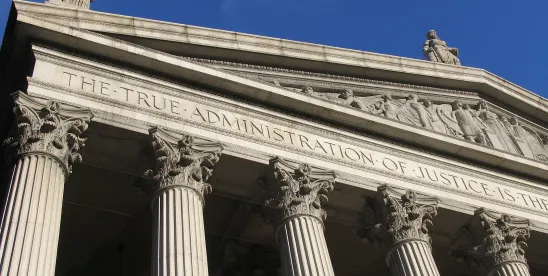Immigration-related cases have recently been highly controversial and much in the news.
Thus, it should be unsurprising that the U.S. Supreme Court was sharply divided in the case of Monsalvo Velázquez v. Bondi, the central issue of which has to do with whether a 60-day deadline for the voluntary departure of a person who had entered the United States unlawfully should be interpreted as referring to consecutive calendar days, or whether the period should be extended when the deadline falls on a weekend or holiday.
Followers of this blog will likely say offhand that there should be nothing controversial about that question. After all, most of my readers are lawyers who file court papers and deal with case filings, the deadlines of which are, by rule, generally and automatically interpreted to allow filings beyond the designated numerical deadline to the first business day following a weekend or holiday. Nevertheless, a question so apparently simple, here in the context of the voluntary departure deadline of 8 U. S. C. §1229c(b)(2), produced a 5–4 decision, with Justice Gorsuch writing for the Chief Justice and Justices Sotomayor, Kagan, and Jackson, with a variety of mix-and-match dissents filed by Justices Thomas, Alito, Kavanaugh, and Barrett.
The case arose when the government initiated removal proceedings against the petitioner, Monsalvo Velázquez, who, after a series of administrative litigation matters had been decided against him and a new 60-day departure deadline imposed, filed a motion to reopen proceedings on the Monday—i.e., the 61st calendar day—following the issuance of the departure order. The statute in question allows for such voluntary departures of individuals “of good moral character.” Velázquez had entered the United States unlawfully two decades before and had apparently led an exemplary family and work life here. In seeking his removal, the government argued primarily that, under the statute, 60 days meant 60 calendar days, a time period that had expired. The government also argued that a challenge to judicial review required an individual to challenge his “removability” from the country, which Velázquez did not do.
The Court first rejected the government’s argument that it lacked jurisdiction to review the petition. The Gorsuch majority was satisfied that the statute’s authorization to review “final orders of removal” and “all questions of law” arising from them was sufficient to allow it to proceed, given Velázquez’s having sought review of what the 60-day provision actually meant. Rejecting the argument of the government and the dissenters, the Court then held that the “evidence suggests a specialized meaning in legal settings where the term ‘days’ is often understood to extend deadlines falling on a weekend or legal holiday to the next business day. When Congress adopts a new law against the backdrop of a ‘longstanding administrative construction,’ the Court generally presumes the new provision works in harmony with what came before.”
Further noting that §1229c(b)(2) follows the government’s own long-standing practice of extending deadlines falling on a weekend or legal holiday to the next business day, the Court also found unconvincing an argument that “day” applied only to regulatory deadlines, and not to statutory deadlines such as the one at issue. Applying a kind of negative textualism—focusing on what the law did not say, rather than what it did—the majority serially disposed of each point raised in dissent, including the idea that a challenge to the statute’s procedural requirement had to be accompanied by a substantive challenge to the petitioner’s “removability.” That is a matter to be addressed on remand of the case.
One recognizes the seriousness of this matter to Velázquez personally, as well as to the government and the public it serves, at a time when immigration matters are at the forefront of political discussion and action. However, one who follows the Court closely cannot resist the guilty pleasure of reviewing what, in essence, is the written record of an informative point-by-point debate among an unusual lineup of justices.




 />i
/>i

